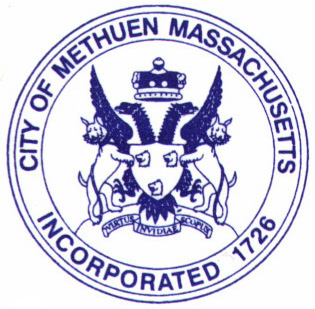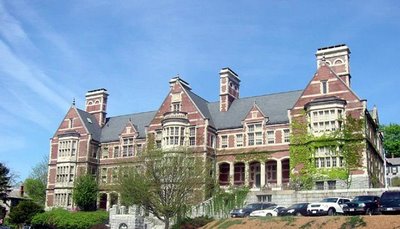CHAPTER 12.
AN ACT FOR DIVIDING THE TOWN OF HAVERHILL AND ERECTING A
NEW TOWN THERE, AND IN PARTS ADJACENT, BY THE NAME OF
METHUEN.
Preamble
Whereas the west part of the town of Haverhill, within the county, of Essex, and parts adjacent not included within any township, is competently filled with inhabitants, who labour under great difficult [ie][y]s by their remoteness from the place of publick worship, and they having made their application to this court that they may be set off a distinct and sep[a][e]rate town, and be vested with all the powers and privileges of a town,
Be it therefore enacted by the Lietitenant-Governour, Council and Representatives in General Court assembled, and by the authority of the same,
[Sect. 1.]
That the west part of the said town of Haverhill, with West part of the lands adjoining, be and hereby are set ofi and constituted a seperate township by the name of Methuen :
the bounds of the said township to be as follows; viz.,
beginning at the mouth of Hawks Meadow Brook, so called, in Merrimack River, and from thence to run, half a point to the northward of the north-west, to an heap of stones, or till it intersect Haverhill line ;
from thence, upon a str[a][e]ight course, to the head of Dunstable line ; and so upon Dracut line, about four miles, to a pine, south-east ;
from thence, six miles or thereabouts, upon Dracut line, south, to Merrimack River ;
and from thence, to run down the said river, about ten miles and fort}- pole, till it comes to the first-mentioned bounds ;
and that the inhabitants of the said lands, as before described and bounded, be and hereby are [fn] vested with the powers, privileges and immunit[fe][y]s that the inhabitants of any of the towns of this province bj law are or ought to be vested with.
Provided,
[Sect. 2.]
That the inhabitants of the said town of Methuen do, within the space of three years from the publication of this act, erect and finish a suitable house for the publick worship of God, and procure and settle a learned orthodox minister, of good conversation, and make provision for his comfortable and honourable support ;
and that they set apart a lot of two hundred acres of land, in some convenient place in the said town, for the use of the ministry, and a lot of fiftj' acres for the use of a school ;
and that thereupon they be discharged from any further payments for the maintenance of the ministry in Haverhill.
And be it further enacted by the authority aforesaid,
[Sect. 3.]
That the inhabitants of the said town of Methuen be and hereby are, impowered to assess all the lands of non-residents, lying within the said town, twopence per acre, towards the building of the meeting-house and settling of a minister there.
Provided, nevertheless,
[Sect. 4.]
That there be, and hereby is, made a reservation or saving of the right and property of the province lands, if any there be within the bounds aforesaid, to this province.
Passed December 8, 1725 ; published January 3, 1725-26.
Currency
Pounds, shillings and pence were the basic currency of Britain throughout the period ,1674-1913, having a consistent relationship of 12 pence to the shilling and 20 shillings to the pound.
Values were generally expressed as �.s.d., or else l.s.d., as in �12 10s. 6d. or twelve pounds, ten shillings and sixpence.
The pound sign stands for Libra, a pound weight in Latin,
the s. is an abbreviation for shilling in English, and
the d. stands for denarius or denarii (a Roman coin).
There are,also, references to guineas, with a value of 21 shillings,
marks (13 shillings, 4 pence),
nobles (6 shillings, 8 pence),
crowns (5 shillings),
half crowns (2 shillings, 6 pence);
and coins worth 6 pence, 3 pence, 2 pence, halfpence and a farthings (one quarter of a penny).
Five, two, one and half guinea coins were made of gold and were introduced after the recoinage of 1696;
crowns, half crowns, six pence, and three pence coins were all silver; as were all pennies and two pence pieces until the introduction of machine milled one and two pence copper coins in 1797.
The last silver English penny was minted in 1820.
Farthings and halfpence were made from copper.
During the eighteenth century a range of foreign currency was also in circulation, including pieces of eight, ducats and dollars.



